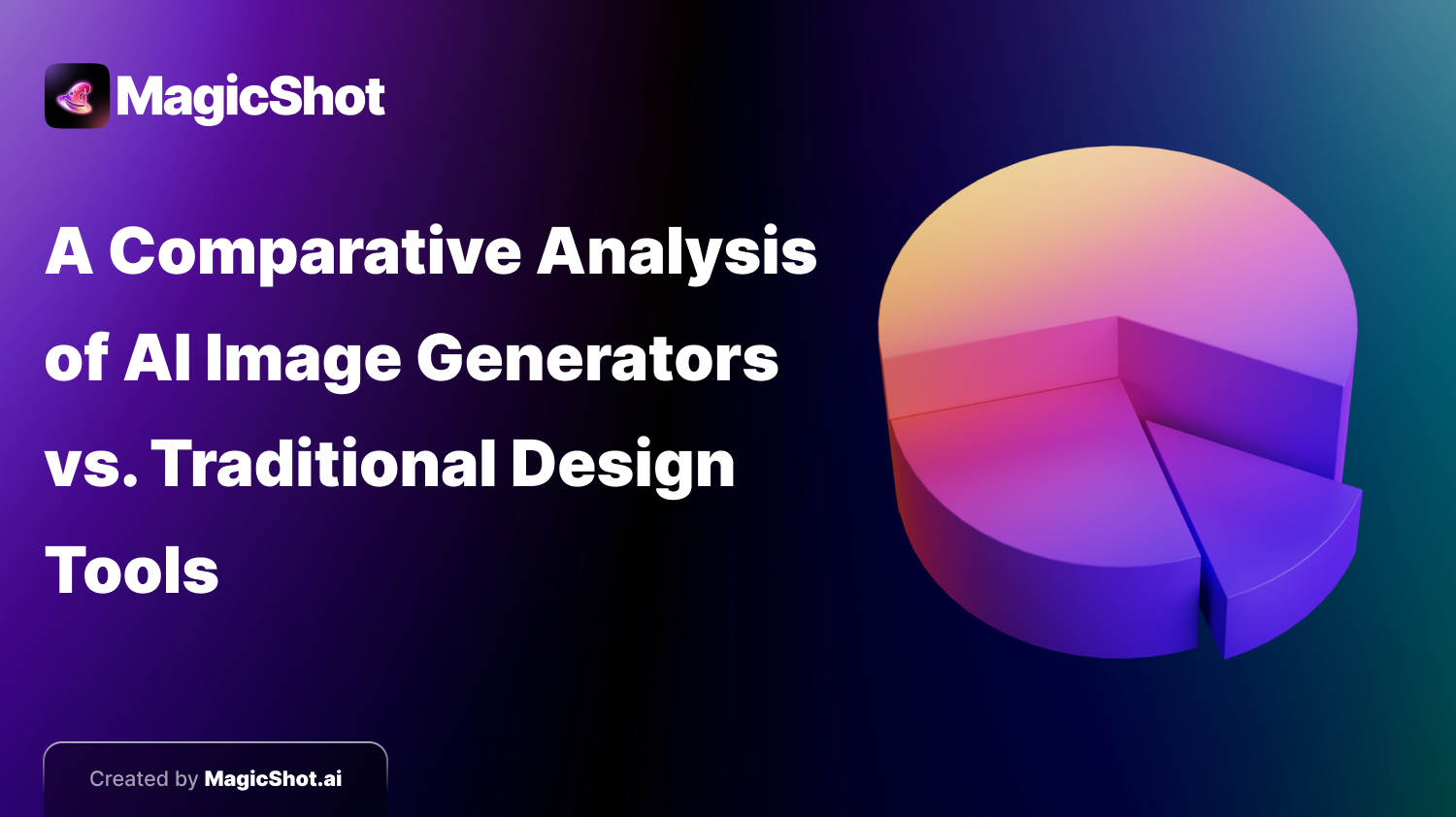AI Image Generators vs. Traditional Design Tools: A Comparative Analysis
- AI
- 2 min read
- September 4, 2024
- Mayur Shinde
The world of visual creation is undergoing a revolution with the rise of Artificial Intelligence (AI) image generators. These tools are changing the way we brainstorm ideas, generate concepts, and even create final artwork.
But how do they compare to the tried-and-true methods of traditional design software? Let’s delve into a comparative analysis of AI image generators vs. traditional design tools.
Traditional Design Tools: The Cornerstone of Design
For decades, graphic designers and artists have relied on a robust toolbox of traditional design software. These tools offer a high degree of control, precision, and flexibility, allowing for meticulous crafting of visuals. Popular examples include:
- Adobe Photoshop: The industry standard for photo editing, image manipulation, and digital painting.
- Adobe Illustrator: Master of vector graphics, perfect for logos, illustrations, and scalable designs.
- InDesign: The go-to for layout and design, used for creating brochures, magazines, and presentations.
Strengths of Traditional Design Tools
- Unmatched Control: You have complete control over every detail of your creation.
- Highly Precise: Precise tools ensure pixel-perfect accuracy for logos, icons, and other technical elements.
- Extensive Customization: Offers a vast library of brushes, textures, and effects for personalized visuals.
- Flexibility for Different Techniques: Supports various illustration and design styles, from photo realism to abstract art.
- Wide Range of Learning Resources: Abundant tutorials, courses, and communities for skill development.
Weaknesses of Traditional Design Tools
- Steep Learning Curve: Mastering design software can take time and dedication.
- Time-Consuming Creation Process: Detailed artwork typically requires significant time investment.
- Limited Ability for Brainstorming: Generating creative ideas within the software can be challenging.
AI Image Generators: The New Frontier of Visual Creation
AI image generators are software programs that use artificial intelligence to create images based on text descriptions. These tools offer a different approach to visual creation, often faster and more intuitive. MagicShot.ai is one such example, allowing users to generate unique images based on their prompts.
Strengths of AI Image Generators
- Fast Idea Generation: Quickly explore a wide range of visual concepts with minimal effort.
- Accessibility for Non-Designers: User-friendly interfaces make it accessible to even those without design experience.
- Spark Creativity: Generate unexpected results that can inspire new design solutions.
- Exploration of Different Styles: Experiment with various artistic styles and techniques seamlessly.
- Time-Saving Efficiency: Streamline the early stages of design by quickly generating base visuals.
Weaknesses of AI Image Generators
- Limited Control: User control over the final image is less precise compared to traditional tools.
- Unpredictable Results: AI interpretations of prompts can lead to unexpected outcomes, requiring multiple attempts.
- Copyright Concerns: The legal implications of using AI-generated images need further clarification.
- Refinement Challenges: Refining and polishing AI-generated images can be difficult.
- Limited Application for Technical Design: May not be suitable for creating highly precise technical illustrations.
Choosing the Right Tool: Collaboration is Key
The ideal tool depends on your specific needs and project requirements. Traditional design software remains essential for tasks requiring high control and precision. However, AI image generators can be a powerful asset for:
- Brainstorming Ideas: Quickly create a variety of visual concepts to get the creative juices flowing.
- Generating Reference Images: Use AI-generated images as visual guides for traditional design work.
- Building Mood Boards: Generate visuals that capture the desired aesthetic direction.
The future likely lies in a collaborative approach where AI image makers assist with idea generation and early stages, while traditional design tools take over for detailed refinement and finalization.
Conclusion
AI image generators are not a replacement for traditional design tools, but rather a complementary force in the design landscape. By understanding the strengths and weaknesses of both approaches, you can leverage them effectively to enhance your creative workflow and generate stunning visuals.
So, the next time you need to create a design, consider using both AI and traditional tools to unleash your creative potential.



